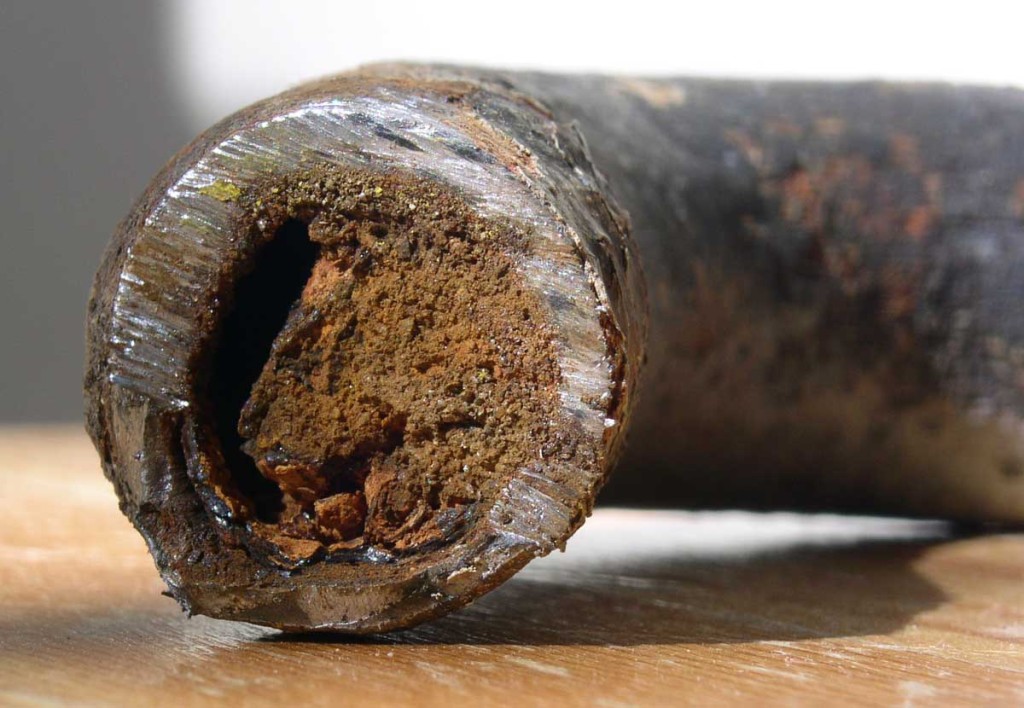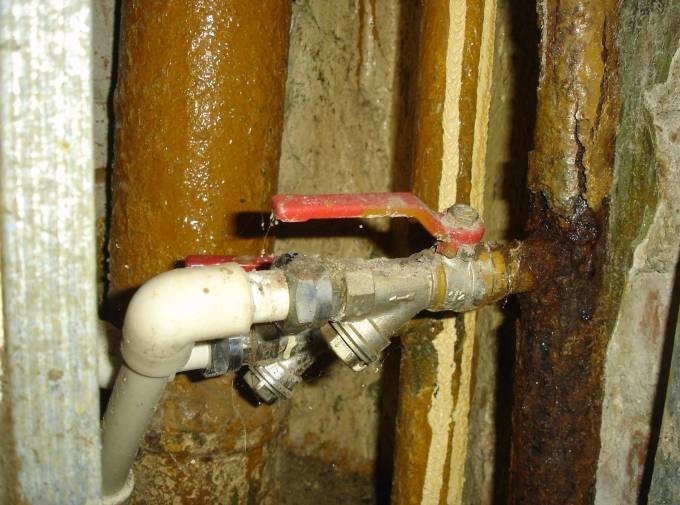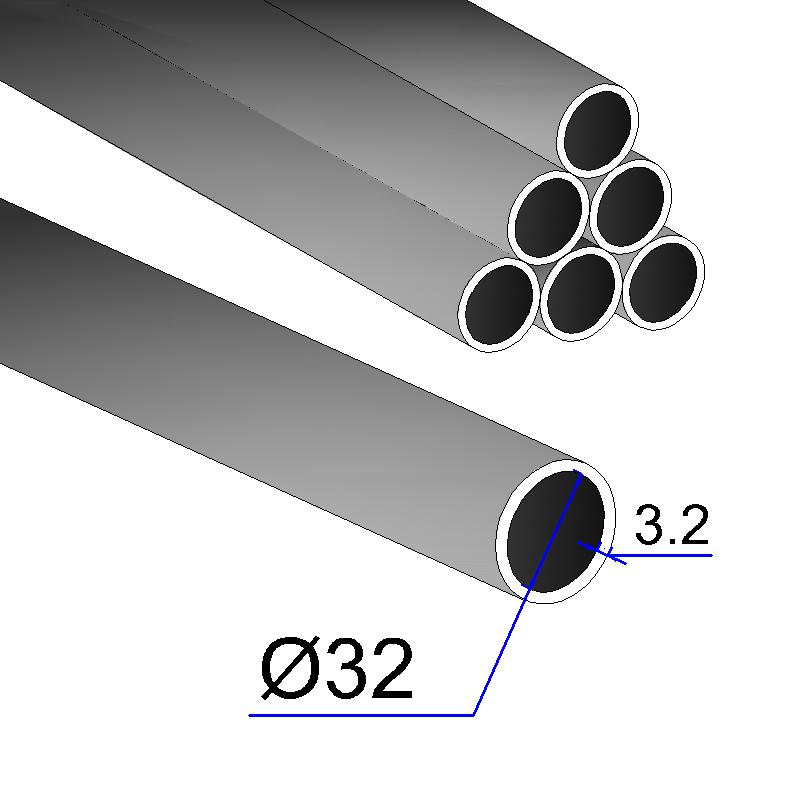How long are metal pipes for water supply? Today we have to rummage around in search of an answer to this question in the regulatory documentation and find out, due to which the resource of pipelines is reduced. Let's get started.
Announce the entire list
First, let's remember which species metal pipes used in cold and hot water supply systems.
Actually, there are currently only four of them:
- Black steel (water and gas pipes GOST 3262-75);
- Galvanized steel, manufactured to the same standard;
- Copper;
- Corrugated stainless.
Curious: a few decades ago, cold water supply lines were massively laid cast iron pipes... However, now they are almost completely replaced by pressure polyethylene ones.
Black steel
Steel rusts. It rusts especially quickly after prolonged contact with water. That is why the resource of steel risers and liners, laid down in regulatory documents, is, frankly, not striking in duration.
Standard service life
The main document establishing the standard service life of engineering communications in a residential building is VSN (departmental building codes) No. 58-88, adopted in 1988. They regulate the terms of maintenance, reconstruction and repair of buildings.
Appendix # 3 to the document contains the following figures:
Destructive factors
What factors limit the service life of VGP pipes without anti-corrosion coating:
| Picture | Description |
|
|
Corrosion. Pipe rusting is accelerated by disturbed outer layer paints, frequent disconnections of the water supply (in this case, the unpainted inner surface of the pipe is in contact with high-humidity air) and poor ventilation in the bathroom (read - consistently high humidity). The first holes appear on longitudinal welds ( VGP pipes GOST 3262 - electrowelded), on threads where the pipe wall thickness is minimal, and in ceilings where the pipe surface is not ventilated and (in the case of cold water risers) is continuously wetted by condensate falling on them. |
|
|
Overgrowth of pipes with deposits (primarily lime salts) and rust. The rate of overgrowth is directly proportional to the hardness of the water in the region: where it erodes sedimentary rocks on the way to the consumer, the gap in the water supply system decreases much faster. The narrowing of the lumen leads to a drop in the water pressure on the plumbing fixtures connected to the water supply. |
|
|
Pipeline diameter. The larger the internal section of the pipe, the longer it retains an acceptable flow capacity. |
|
|
Wall thickness. In accordance with GOST 3262, ordinary, reinforced and lightweight pipes are produced. It is clear that those strengthened before the appearance of the first through fistulas will last longer. |
Note: Steel liner overgrown with deposits can often be cleaned with a steel cable or string. Even more effective destruction of deposits is provided by chemical flushing of the water supply system: an alkaline or acidic environment dissolves lime and iron oxides.

Real life
In the memory of the author, the minimum period of trouble-free service of the cold water supply steel in the new building was only 10 years. The house was built and rented out shortly before the collapse of the Union, in conditions of austerity on building materials and the actual inoperability of Soviet norms and standards. Lightweight VGP pipes, purchased for reasons of economy, quickly and massively began to leak on welded joints and threads.
By the way: despite the same standard service life quoted for blacks steel pipes in cold water and hot water systems, cold water pipes fail much faster. They rust intensively due to condensation falling on their surface in the hot season and rapidly overgrow with deposits due to the absence of lime and rust dissolving additives in drinking water.

The oldest black steel engineering systems have been in service for over half a century.
In addition to the large thickness of the pipe walls, their longevity is promoted by:
- Low humidity level;
- Lack of condensation on cold water pipes;
- Periodic painting of risers and liners;
- Low content of mineral salts in water.
Cink Steel
Thanks to the anti-corrosion coating, galvanized steel should be more durable than black steel. How much?
Standard service life
We can find data about him in the same VSN 58-88:

Destructive factors
How and why can a galvanized metal pipe for water supply fail?
During his work as a plumber, the author observed the only scenario of the appearance of fistulas on a galvanized water supply system: they appeared on a welded joint. Strictly speaking, it is impossible to cook galvanized pipes from the word "absolutely": in the seam area, zinc burns out completely. You see, it evaporates already at 900 degrees, and steel melts at 1400-1500.
As a result, the owner of a galvanized water supply system, mounted on welded joints, receives a pipeline made of corrosion-unstable (albeit in places) material, but at twice the price.

How to properly mount galvanizing with your own hands to ensure the maximum resource of the water supply system?
Here is the instruction used by plumbing fitters in the 50-60s of the last century:
- All connections are made only and exclusively on threads (cut by hand or on a lathe) using cast iron threaded fittings;
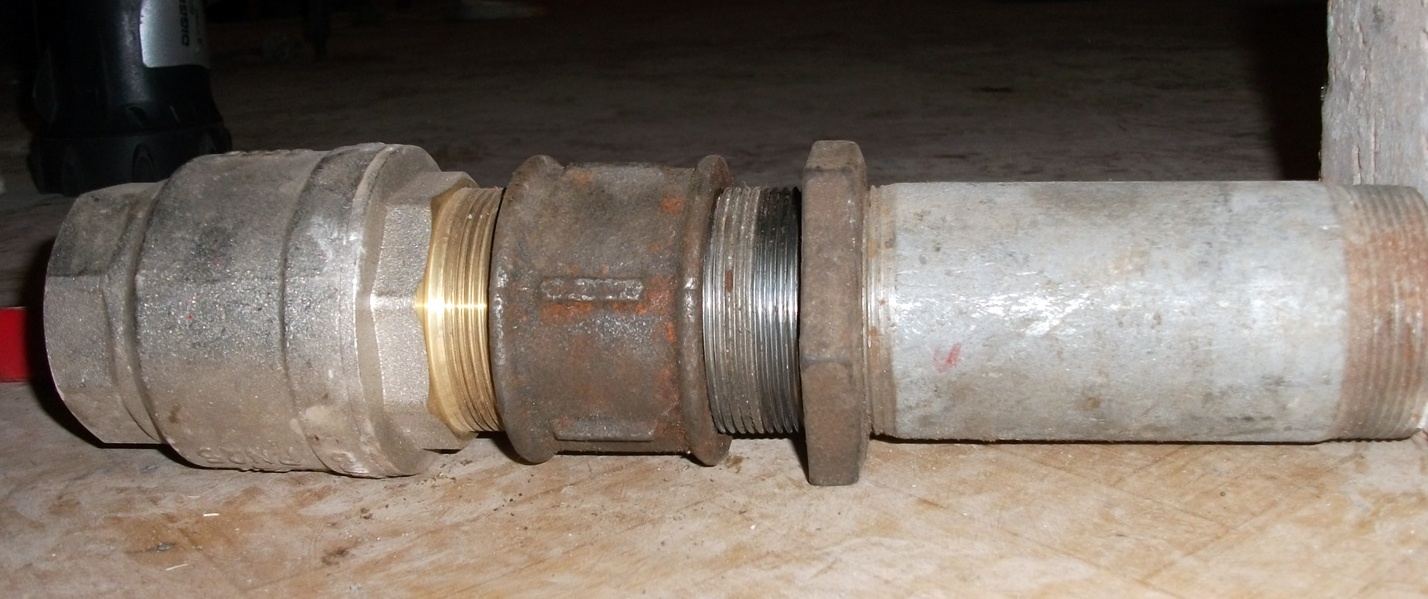
- The joints are sealed with plumbing flax impregnated with lead lead.
Do galvanized pipes overgrow the water supply? Deposits and rust do not linger on their walls, however, the formation of a water-impermeable plug is still possible under certain circumstances. It goes like this:
- Debris accumulates in the water supply (usually cold) - sand, scale from welding and rust flakes. A blockage is formed if the water supply taps always open only partially, and the speed of the water flow does not allow it to carry the debris into the mixer and further into the sewer;
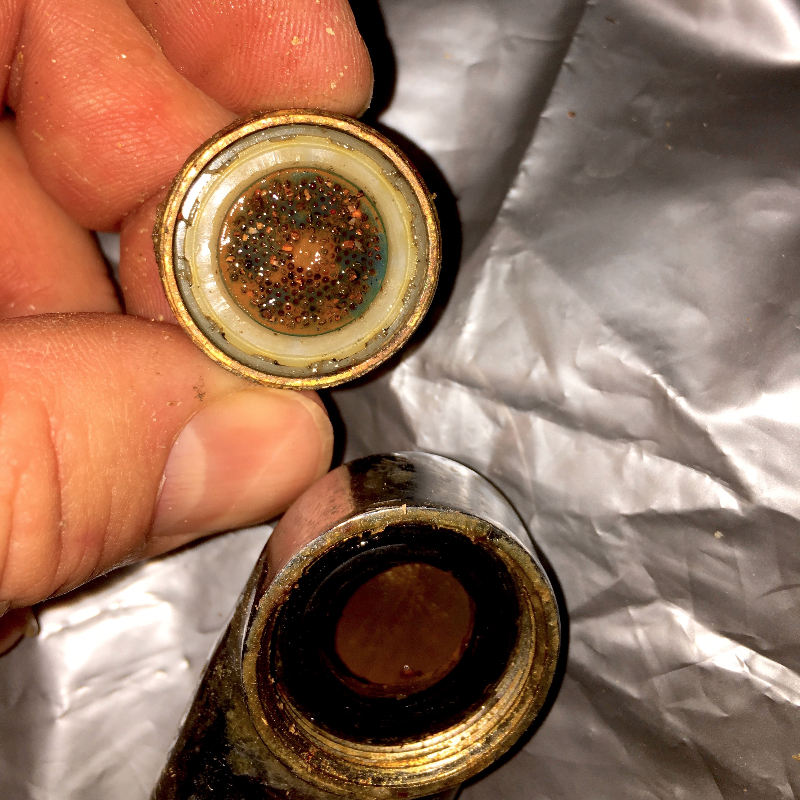
- Over time, the accumulation of debris is cemented with lime and iron oxides, gradually turning into a material with the strength of stone.
Real life
The author of the article must confess to the reader: he cannot name either the minimum or maximum service life of galvanized water in the water supply. The fact is that he has never come across a galvanized pipe that needs to be replaced due to natural wear and tear.
Lines and risers that were opened after 50-70 years of operation were invariably in perfect condition and were no different from new ones.
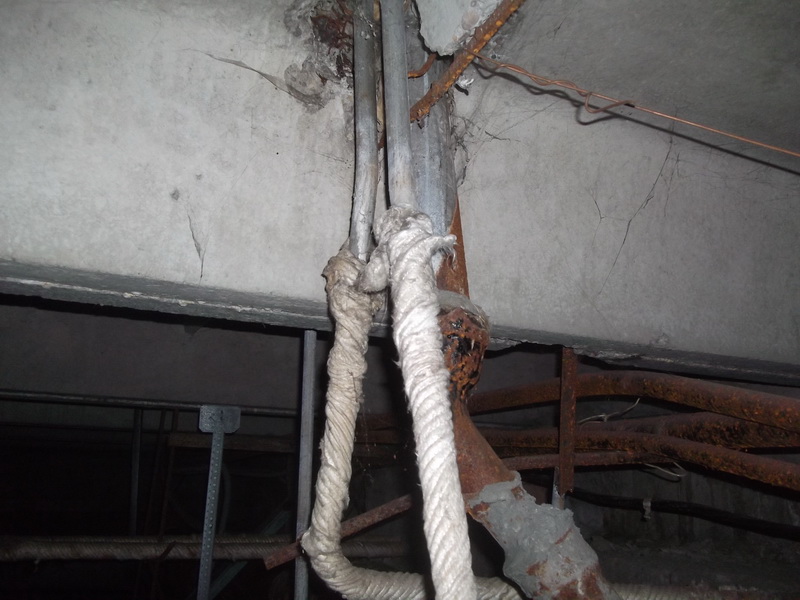
Copper
The next metal on our list is copper.
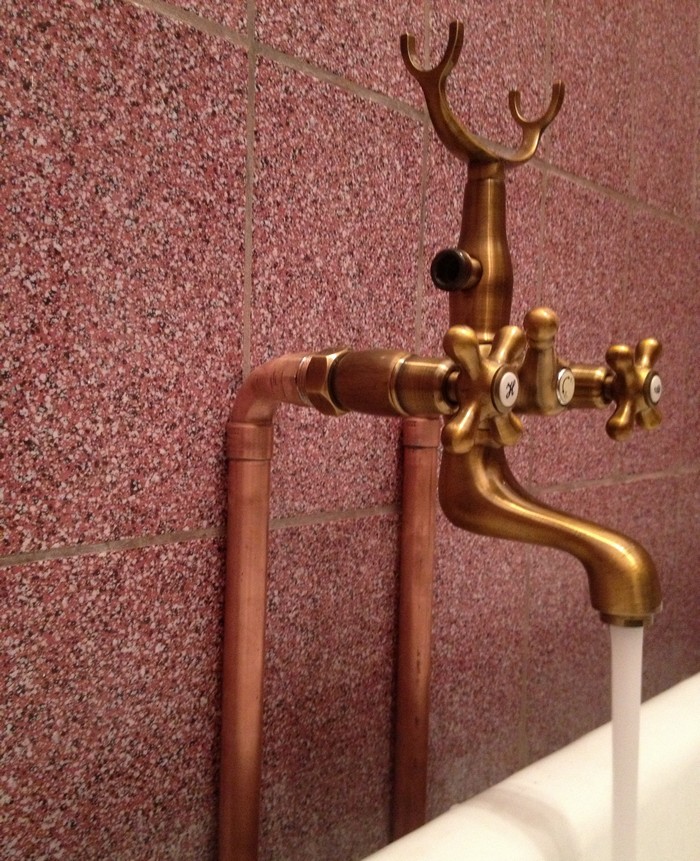
How long can these metal pipes for hot water supply last? There are no normative documents establishing specific terms of service. Manufacturers promise vague "50+" years.
In practice:
- The oldest copper plumbing has been in service for over a century and is still in perfect condition;
- Copper does not degrade over time, does not corrode and is only afraid of significant mechanical stress: the metal is very ductile, and the pipe walls are only about a millimeter thick.
Destructive factors
As they say in the hero-city of Odessa, "there are still some":
- The service life of a copper water pipe may be reduced if, instead of soldering, during installation, press fittings with rubber sealing rings... For 20-30 years, rubber loses its elasticity (primarily in hot water) and is capable of leaking;
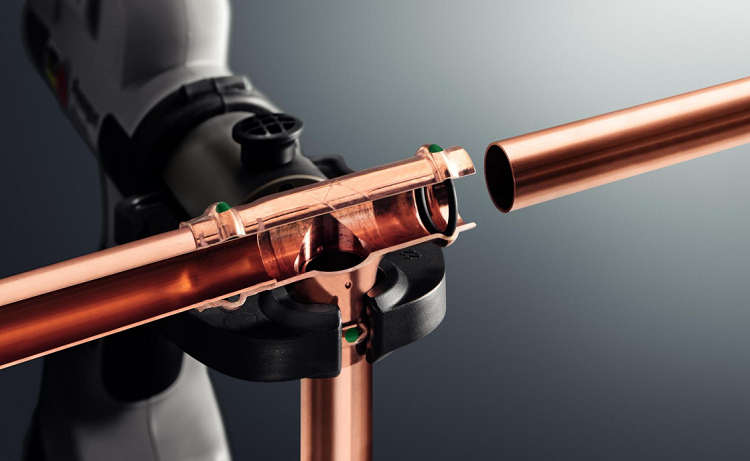
- The destruction of the walls of copper pipes can lead to their banal erosion. At high flow rates, sand and other suspended matter rapidly destroy soft metal;
Note: the problem is solved by installing coarse filters and limiting the water flow rate to 2 m / s.
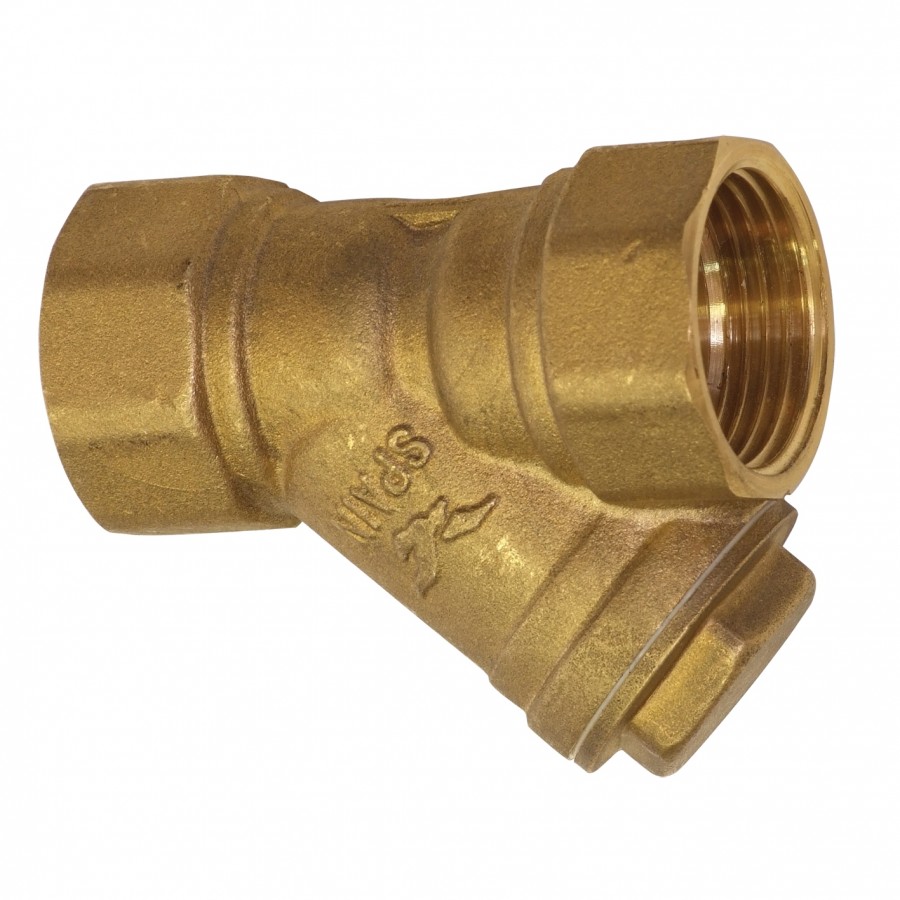
- Theoretically, a water hammer and freezing of water in it can break a copper water pipe. However, the water hammer should be downright extreme (the destructive pressure for copper pipes is 200 - 240 atmospheres), and defrosting should be repeated at least 5-6 times: the plasticity of copper allows it to withstand a slight change in diameter or length without destruction.
Corrugated stainless pipe
How long will corrugated stainless steel last for water supply?
In the opinion of one of the leading manufacturers, Lavita - an infinitely long time. Lavita explicitly states an unlimited service life for its products.

However: the silicone gaskets in the press fittings will have to be changed after 30 years. This work is not difficult: the fitting is disassembled to replace the seal with a pair of adjustable wrenches in 30-60 seconds.
What real time stainless steel service for water supply, while it is impossible to say simply because of the limited time of its operation.
Destructive factors
The only thing that can damage the stainless water supply system is rough mechanical impact. Thin (only 0.3 mm) walls are easily crushed by a strong impact.
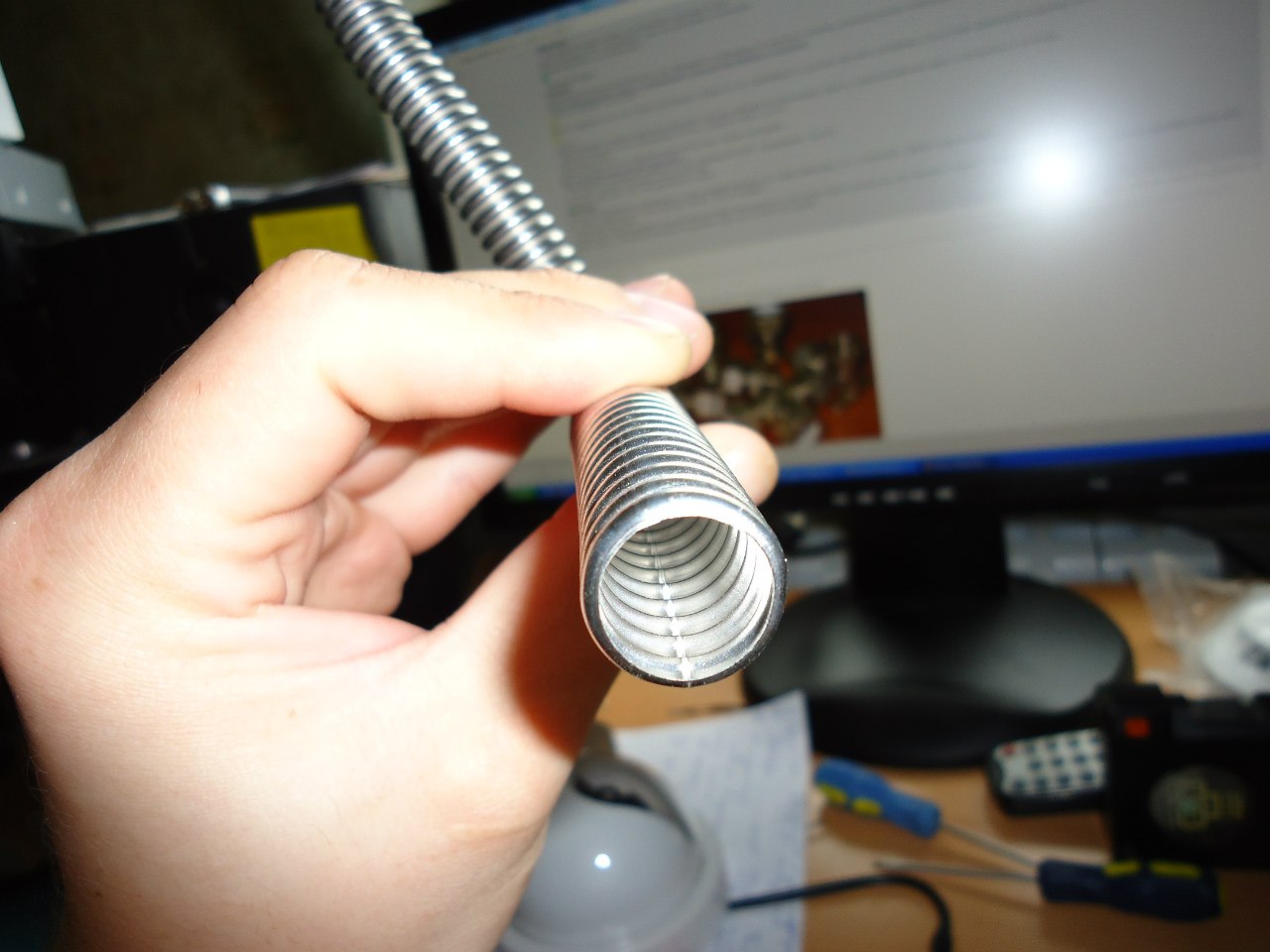
But you can not be afraid of the notorious water hammer and defrosting:
- The combination of a tensile strength of 210 atmospheres (according to Lavita), combined with corrugation of the walls acting as a damper, will allow the water supply system to withstand any short-term pressure surge;
- When the water freezes, the corrugation will allow the pipe to lengthen and accommodate the volume of ice that has increased during crystallization without destruction.
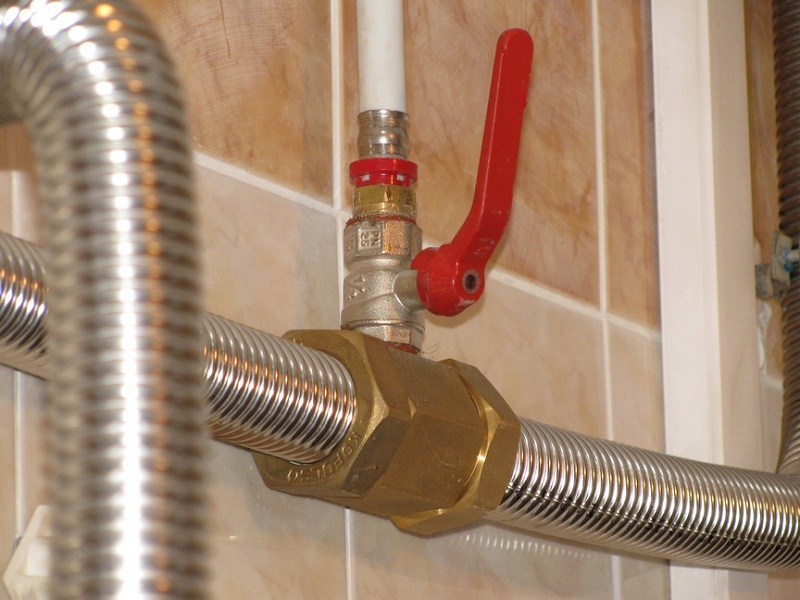
Conclusion
We hope that we managed to satisfy the curiosity of the reader. To find out more about how long pipes for water supply - metal and plastic - can last, the video in this article will help you. Good luck!
Add to bookmarks
Moreover, they are still installed in most apartments. Steel pipes are notable for their low cost, while the costs of their installation are high. But even in this case, this option is much more economical than, for example,.

Branch line tie-in clamp allows you to connect to an existing pipeline without cutting it or inserting a tee
It is also important to note that for heating systems it is preferable to use pipes made of black steel, and for water supply it is better to choose from galvanized steel. The main disadvantage of steel pipes is corrosion. It is completely impossible to prevent it. It can only be slowed down if zinc coating is used in the production of pipes (inside and out).
When purchasing pipes for metal communications, pay attention to the method of their manufacture (this affects the term of their use). They can be either electrically welded and used for water pipes, heating systems and gas pipelines, or seamless. The fact is that, with an equal inner diameter, it is lower than, for example, copper or polymer ones. The reason lies in the inner surface, which is rough and, accordingly, causes turbulence in the fluid flow, thus making it difficult to move.
Features of pipeline communications made of steel

Installation of heating pipes when connecting shut-off / control valves or steel pipelines using a flange connection, where 1 is a steel pipe; 3 - steel flange in accordance with GOST 12820-80 with an inner diameter groove (2); 4 - collar sleeve; 5 - gasket; 6 and 7 - fasteners; 8 - a sleeve welded into a socket to a pipeline made of polymer material and a collar sleeve.
Steel pipes can easily withstand hydraulic loads, and this does not affect their durability and, accordingly, does not shorten their service life. They have good thermal conductivity, and the low coefficient of expansion of the material with temperature changes allows it to be hidden in the wall. They are also great for creating radiant forms of hot water heating.
Nevertheless, the disadvantages of metal steel communications are no less than advantages. Of course, they are heavy and bulky, which makes them not so easy to use. Installation of pipes is not possible without gas welding, which significantly increases its cost. On average, steel pipes in real life last more than 20 years.
They are operated in terrible conditions underground or in multi-storey buildings as various public utility lines at a coolant temperature that is close to boiling and an internal pressure of more than 6 atm. And with water hammers, it reaches 12-15 atmospheres. It is in such conditions that they are actually used, in a mode in which no metal-plastic or plastic pipe could not stand even 15 minutes of work. This is the main advantage of metal pipes.
In an ordinary urban multi-storey building, steel pipes serve when they are open or plastered in brick walls... In conditions under which the internal temperature is 6-7 atm., And the water temperature reaches 90 degrees, only pipes made of steel can work.
Due to its mechanical strength and low coefficient of thermal expansion, in the water supply and heat supply system in urban multi-storey buildings, varieties of metal pipes on this moment do not have any competitors. But no one wants to work with such pipes, since they are straight (sometimes up to 12 meters), heavy and difficult to transport. When working with them, the most unpleasant thing is that they are mounted by gas welding.
A few more benefits
It is worth mentioning the lifespan of steel pipes in Stalinist buildings, where they are used in the heating system at a temperature not exceeding 50-60 degrees. Heating systems that are equipped with cast iron radiators, can safely serve for more than a century. Although they can't even, they serve. There are cases when such heating systems were built in late XIX century and functioned perfectly until the mid-80s of the 20th century.
Another good property of steel is worth noting. It is difficult to overestimate it - it is the lowest coefficient of thermal expansion among other pipes. So, for example, in copper it is 2 times more, and in plastic - every 15-20. In simple terms, this is the stability of their size.
So, no other pipes can be hidden in walls or floors, since they increase or decrease in size with temperature changes (this is especially important if heating is considered). And this already leads to a violation of the integrity of the coating in which they are mounted. Therefore, when using non-metallic pipes, such compensating structures as, for example, soft thermal insulation are used.
A steel pipe, like many metal pipes, is best suited for the construction of radiant (not to be confused with radiant) water heating systems. If we talk about shortcomings, then the most important one can be written high level corrosion, as well as damage of a different nature. All steel pipes used in heating rust very quickly and become clogged with various deposits. The best protection method is the use of galvanizing technology and laying of larger diameter pipes.
Perhaps the only and main disadvantage of using galvanizing is the impossibility of using antifreeze in this system, on which the operation depends, that is, the service time. If we look at it in more detail, then zinc coating increases their resistance to corrosion, from which their service may deteriorate. This contributes to the fact that the life and service life of metal structures is extended by about several years.
Useful information about steel communications
There are several methods for galvanizing steel pipes: diffusion and hot. The hot-dip galvanizing method is a process when everything is immersed directly in liquid zinc at a temperature of 450 degrees. This is a very time consuming process.
Diffuse coating is a process when a pipe is coated directly with zinc atoms at a temperature of 400 degrees. During this, zinc atoms penetrate into the intercrystal lattice of the heating pipe and form a fairly strong bond. This coating is carried out in special powder containers. That is why the galvanized steel pipe receives the necessary electrochemical protection. While other options for metal structures behave completely differently during galvanizing, therefore, they get a completely different result.
Installation of steel heating systems usually takes place in two ways: welding and twisting of a threaded thread. The most common option is for heating, which occurs when using self-shielded wire. Its diameter ranges from 0.8 to 1.2 mm. In some cases, it is possible to use electrodes, the diameter of which can reach up to 3 mm.
But non-galvanized pipes are welded mainly with an overlap. If there is, of course, a diameter of 25 mm. At enterprises, pipe joints of this diameter are sometimes used butt-to-end. The main difficulties are caused by welding metal heating pipes, which are under pressure, because they are almost always located close to the walls of the building. When installing the heating system, special requirements are imposed on the weld, the outer surface of which must be uniformly welded without any cuts, cracks or sagging.
Steel pipes have a good 50-year history of use, significant advantages and look quite good against the background of new modern technologies... But still, the use of metal pipes has slightly lost its relevance when polymer pipes began to be actively used in heating systems.
It is very difficult to name those areas in which steel pipes are not used. They are used in oil pipelines, heating mains, main water pipelines, heating systems and many others. Many people are interested in how long a steel pipe can last. Their service life is highly dependent on the operating conditions.
How long can steel heating pipes last?
The heating system, which uses steel pipes, has always been considered strong and reliable, capable of withstanding fairly heavy loads. The service life of steel heating pipes is thirty years. But why do some owners of newly built houses refuse steel pipes and prefer to make heating from plastic? And the thing is that the wrong pipes are chosen. There are two types of steel pipes:
— suture... This is the cheapest type of steel pipe. The choice of this type of pipe for heating is doomed to failure in advance, since its service life is only a few years and they will not live up to thirty years. This is because it is very difficult to bend such a pipe when carrying out a heating system, and the seam simply bursts at the bend. Also, the seam cannot be well processed from the inside, a leak may appear and the pipe will need to be replaced. Therefore, it is not suitable for heating systems;
— seamless... Such pipes are much more reliable. For individual heating, such pipes with a diameter of 25 mm are recommended; during tests, they withstand a load of up to 20 atmospheres. Therefore, for twenty years, at least, such pipes will serve without problems.
Remember that previously only steel pipes were installed for the heating system. And often, when installing autonomous heating and replacing steel pipes with plastic ones turned out that they could serve for a long time, despite the fact that they were installed twenty years ago.
How long can water supply steel pipes last?
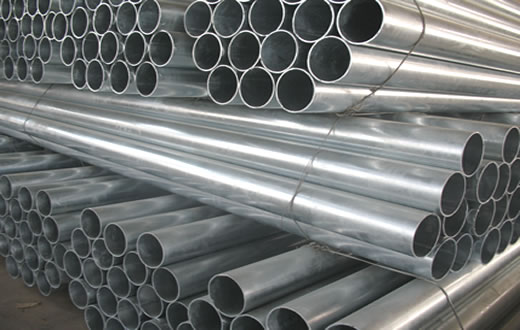 The service life of steel water pipes and sewage pipes made of the same metal is fifteen years. The same pipes made of galvanized steel can last for thirty years. During the first five years of operation, the inner surface of the water supply pipes overgrows, and wet condensation appears on the surface, not to mention the fact that they withstand high dynamic loads. And galvanized steel pipes are coated with an anti-corrosion coating, so they can serve much longer.
The service life of steel water pipes and sewage pipes made of the same metal is fifteen years. The same pipes made of galvanized steel can last for thirty years. During the first five years of operation, the inner surface of the water supply pipes overgrows, and wet condensation appears on the surface, not to mention the fact that they withstand high dynamic loads. And galvanized steel pipes are coated with an anti-corrosion coating, so they can serve much longer.
Advantages and disadvantages of steel pipes
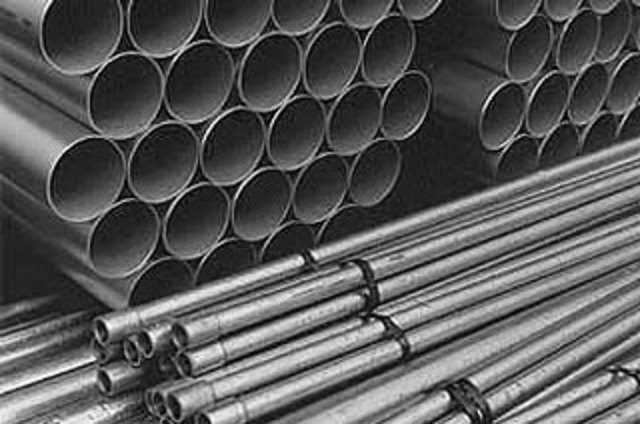 Advantages:
Advantages:
- low cost, however, this is offset by high cost installation works;
- strength;
- with increasing temperatures, there is a slight deformation;
- durability.
Disadvantages:
- corrosion. However, to delay it, a zinc coating is used, which is on galvanized pipes, which can last the longest;
- welding is required to work with pipes;
- poorly bend;
- with a sharp increase in pressure, the pipe may burst.
The quality of living in the countryside or apartment building largely depends on what water pipes were installed in it. In this article, we will look at several types and characteristics of pipes for domestic water supply.
Modern pipe manufacturers use a variety of structural materials in the manufacture of their products. However, currently, only plastic or metal pipes are used in water supply systems.
Metal water pipes
The first metal water pipes appeared in the houses of wealthy townspeople 3 centuries ago. Since then, the metal sewage system has hardly undergone any changes.
IN modern houses and apartments, you can see sewer pipes made of the following types of metals:
- High carbon, structural, unalloyed steel without corrosion protection, otherwise called "black".
- Highly purified copper with a minimum amount of antimony, lead and arsenic impurities (less than 0.001 percent).
- High carbon, zinc-based anti-corrosion coated structural steel, otherwise called galvanized steel.
- Steel alloyed with chrome, or "stainless steel".
Plastic water pipes
Sewer pipes made of polymers appeared in apartments only at the turn of the 20th and 21st centuries. It was at this time that an industrial method for the polymerization of organic substances was created, with the help of which the following types of structural polymers were created:
- Polyethylene is the purest type of plastic, suitable for the construction of drinking water pipelines.
- Polypropylene is a plastic with high temperature resistance and high ring stiffness.
- Polyvinyl chloride is a material with excellent structural rigidity and an excellent ratio between wall thickness and product diameter, guaranteeing a high level of throughput.
In addition to the aforementioned types sewer pipes, now there are plumbing systems made of metal-plastic, which are a structural material, which includes layers of metal (aluminum foil) and plastic (polypropylene, polyethylene).
The properties of fittings and water pipes depend on a number of factors, including the parameters of the transported medium, the characteristics of the external environment, and more. By far the greatest influence on the properties of a piping system is the material of the pipe construction. After all, the ability of pipelines to resist internal and external influences depends only on them.
In this article, we will consider the characteristics of all materials used for the production of pipes and touch on their positive and negative qualities.
Characteristics of metal structures
Metal pipes can be steel, copper, galvanized and stainless.
Despite the difference between these types of metal, they all have a common set of advantages, including:
- High level of heat resistance. Steel and copper pipes are capable of working in hot and cold pipelines. In addition, these metals can withstand a very high temperature load compared to polymer products (up to 300 degrees Celsius). Therefore, pipes made of such materials can be used not only for drinking and technical water pipes, but also for the heating system of a house.
- High level of ring stiffness. Metal water pipes can withstand short-term loads equal to 250 MPa, which is significantly higher than that of plastic elements. This suggests that throughput metal structures are an order of magnitude better than similar polymer products.
- Excellent maintainability. Any metal pipe can be repaired without completely dismantling the plumbing system. Copper pipes are repaired by brazing, and steel pipes by welding.
There is one common drawback for metal water pipes - they all have a large mass. Steel and copper structures generally weigh up to 10 times more than those made from plastic. In addition, the installation of steel systems will take more time and money than the installation of plastic pipes. Steel water pipes are mounted either on not the most reliable threaded connections, or on very reliable welding. Copper pipes are installed using compression sleeves or by brazing.
Copper pipes differ from their metal "brothers" in that they hardly corrode, due to which they serve for an incredibly long time. In the absence of serious breakdowns, a copper plumbing system can last for several centuries. However, this metal is quite expensive and pipes made of it are several times more expensive than steel pipes.
Steel pipe properties
The exact characteristics of steel water pipes depend on what kind of steel it was made of. For example, non-galvanized water pipes are distinguished by their cheap design and widespread use of this substance, but on the other hand, their service life is rather low.
Steel pipes covered with a galvanized layer are deprived of this disadvantage, however, they are much worse suitable for repair and have several restrictions on the type of installation; they can be assembled exclusively on threads.
"Stainless steel" has almost no flaws. It is relatively inexpensive and easy to repair.
But there is also a disadvantage here. It consists in the incredibly time consuming process of installing a stainless steel plumbing. This is due to a number of difficulties during the welding of such pipes. Therefore, you will have to spend a lot of money on the services of a specialist welder.
Characteristics of polymer pipes
Having studied the variety of different designs made of these materials, it is easy to understand that such pipelines have a lot of advantages, including the following qualities:
- Complete independence from the pumped substances. Plastic pipes not only do not change their own properties under the influence of the liquid passing through them, but also do not affect them. chemical composition, which is especially important in the construction of drinking water pipelines.
- Good level of ring stiffness. A pipeline made of polymeric materials can withstand a pressure of 5 MPa. Of course, this is not much compared to copper and steel systems, but in most cases the pressure in household water pipes does not exceed half of this indicator, so the ring stiffness of polymer pipelines will be quite enough even to provide water for an apartment building.
- Long service life. When correct installation and careful use, a polymer pipe can last 100 years, which is several times higher than that of a non-galvanized steel pipe.
- A very simple installation process, most of the operations can be performed without the help of specialists.
The negative properties of polymeric materials common to all types include:
- High level of flammability. During a fire, plastic pipes not only burn, but also emit into environment a lot of poisonous substances.
- Poor structural rigidity. Polymer pipes cannot resist either lateral or longitudinal deformations.
- Susceptibility to mechanical damage. Any sharp or heavy object can damage the pipe.
Properties of polypropylene products
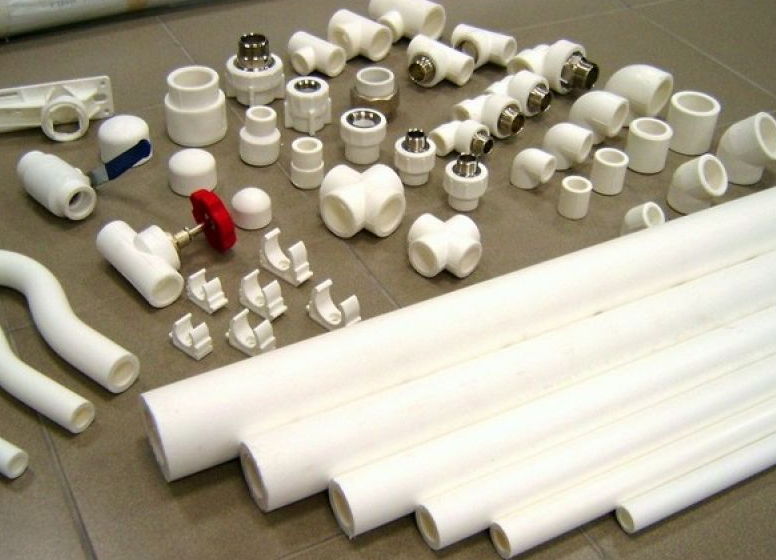
Polypropylene water pipes and fittings have the following set of advantages:
- Ability to endure high temperature transported substance (up to 95 degrees Celsius), so polypropylene pipes can be used not only to transfer cold, but also hot water.
- Very low cost. This applies both to the pipes themselves and to their installation. Polypropylene plumbing will cost the buyer cheaper than all others.
The disadvantages of this material include the difficult process of installing collapsible joints in pressure systems. The method of installing polypropylene pipes is based either on gluing joints or on soldering. For arranging a collapsible unit, you can use a special fitting, in which, in addition to a polypropylene case, there is also a metal fitting.
Properties of polyethylene structures
The main advantage polyethylene pipe is a high level of plasticity. Only these pipes can freeze along their entire length in winter and thaw in summer without losing their tightness.
The high plasticity index ensures good seismic stability of the system.
A polyethylene water supply system is not afraid of any movement or tremors in the ground.
The disadvantages of this material include low heat resistance, a polyethylene pipe can pump extremely cold water, the temperature of which does not exceed 40 degrees Celsius.
Features of PVC pipes
PVC products are almost never used for pumping water. This material is quite fragile and is mainly used in sewerage systems. However, this material can often be found in drainage systems of fire extinguishing systems, because it is the most heat-resistant type of polymer and can withstand temperatures up to 400 degrees Celsius.

Reinforced-plastic pipes
In terms of their positive and negative characteristics, these products are similar to conventional polymer products. For example, the service life of a metal-plastic system does not exceed 80 years, as well as a polypropylene water supply system. The installation of these pipes is also easy because they fit onto special fittings.
This material, which is a symbiosis of plastic and metal, differs from ordinary polymer pipes in a slightly different installation technology. In addition, metal-plastic pipes are produced only in certain sizes, and their diameter does not exceed 63 millimeters.
Features of the assortment of pipes for water supply
The range of metal pipes is determined by special regulatory documents. The norms for the production of pipes from polymers are established according to the same principle. All geometric parameters are described in GOST. According to it, the minimum diameter of a steel pipe is 6 millimeters, and the maximum is 150 millimeters. For copper pipes, this indicator varies in the range from 6 to 267 millimeters, and the wall thickness can vary from 0.5 to 3 millimeters.
Polypropylene and polyethylene water pipes can be produced in 34 standard sizes. Smallest size a polymer pipe is 1 centimeter and the largest is 160 centimeters. For plumbing systems, it is optimal to use pipes with a cross-sectional diameter of up to 16 centimeters, that is, only 15 typical sizes. Reinforced-plastic pipes are produced in 11 versions from 14 to 110 millimeters.
At the same time, pipe fittings are produced with a diameter of no more than 63 millimeters, so the real assortment metal-plastic pipes limited to 8 typical sizes.
Without pipes, it is impossible to imagine the life of not only an individual house or enterprise, but also entire districts and cities. Pipes are used to move cold and hot water, to create heating mains, sewage systems, for many other purposes. The quality of pipes depends not only on their service life, but also on the ecology of both a separate section and the country as a whole.
The length of networks (in one-pipe dimension) in Russia is impressive - it is more than 1 million km! At the same time, about 30% (!) Of pipelines are so worn out that they need urgent replacement and repair.
Let's take a closer look different types pipelines (water supply, heat supply, sewerage), their condition and problems arising from their deterioration and poor quality.
Water supply pipelines
The total length of water supply networks is more than half a million km, and about 30% of them need replacement and repair. What are the risks of old, rusty steel pipelines?
Firstly: with leaky pipelines, it is impossible to ensure the supply of water from its intake to the tap without reducing the quality. Water pollution during its transportation occurs both by corrosion products and as a result of suction groundwater through leaks. Contaminated water worsens health and at the genetic level affects the life expectancy of every Russian.
Secondly: the overgrowth of the inner surface of the pipelines entails an increase in the energy transfer requirement. The inner surfaces of about 80% of water pipelines have such deposits that their throughput is reduced by 2-2.5 and even 3 times compared to the design one! According to the calculations of the Academy of Public Utilities, overgrowing of the inner surface of pipes leads to an increase in the cost of 1 m 3 of water up to 50%, and the cost of electricity for the production and sale of 1 m 3 of water is 30% higher than the average European level.
Thirdly: through the holes formed in old corroded pipelines, water enters the ground, causing an increase in the level of groundwater, which in turn contributes to corrosion damage to the outer surface of the pipeline. It is obvious that an increase in the level of groundwater due to leaks from pipelines also threatens the safety of utilities and buildings.
Fourth: the loss of water during its transportation through leaky pipelines, amounting to tens of percent, leads to the fact that the consumer is forced to pay for water that he does not receive. Russia annually takes about 80 billion m3 of water from open and underground sources for municipal, industrial and agricultural needs. If we take losses in the amount of 30% of the volume of water supplied to the network (25 billion m3), and the cost of 1 m3 of water at the level of 30 rubles, then the cost of the annually lost water will be 225 billion rubles.
District heating pipelines
Hot water is supplied through these pipelines for heating systems and hot water supply.
Out of about a third of a million km of heat supply networks (in one-pipe dimension), about a sixth of them are in need of replacement and repair. Obviously, in heating mains, one more important component is added to the problems described in the story about pipelines for water supply (overgrowth and leaks) - heat loss during transportation of hot water from a heat source to its consumer.
The following, truly depressing, figures speak about the deterioration of modern heating networks:
- in a number of regions there are up to 400 accidents per 100 km of networks,
- due to leaks in the networks, more than 70 million tons of standard fuel is lost without benefit, the total cost of which (at a cost of 1 ton of fuel equivalent, 2100 rubles) is 147 billion rubles.
- according to the Association of Producers and Consumers of Industrial Polymer Insulated Pipelines, about 300 thousand accidents in heating networks occur in the country every year. With the average cost of eliminating one accident 30 thousand rubles. annual costs may amount to 9 billion rubles.
- the durability of heating networks is 1.5-2 times lower than abroad, and does not exceed 12-15 years.
It is worth noting that the quality of heating mains is most relevant for Russia, because we have the highest level of district heating (up to 80%).
The predominant method of laying heating networks in the Russian Federation is laying in non-passable channels with mineral wool insulation (80%). Channelless laying made of prefabricated structures using insulation made of reinforced foam concrete and bitumen-containing masses (bitumen perlite, bitumen-vermiculite, bitumen-claydite), makes up 10% of the total length of heating networks.
Due to the humidification of the materials used during operation, the heat-shielding properties of heat-insulating structures are sharply reduced, which leads to heat losses that are 2-3 times higher than the standard ones.
Total heat losses in district heating systems account for about 20% of the supplied heat, which is 2 times higher than the same indicator in the advanced countries of Western Europe.
Drainage (sewerage) pipelines
More than 150,000 km of pipelines are used for wastewater disposal, of which more than 30% need to be replaced and repaired. Worn out and old systems are depressurized, which creates a danger of contamination of water bodies. Besides, sewer networks are often laid next to water pipes, and given that there are leaks in both of them, there is a suction of sewage or soil contaminated by them and their ingress through the aquifers into the water pipes. Worn out underground pipelines are one of the main causes of intestinal infectious diseases, which have long been forgotten in developed countries!
We examined the current deplorable situation. Question: "Who is to blame?" we will leave it for other authors and other publications, but here we will try to answer another eternal question:
What to do?
One of the main problems is that the existing engineering networks in Russia are approximately 70% steel pipes.
The main advantage of steel pipes is their strength. This is important when moving high-pressure media through pipelines. At the same time, in the housing and communal sector, the strength qualities of steel pipes are used no more than 30%. Thus, the main advantage of steel pipelines turns out to be practically unnecessary, and the disadvantages (corrosion, and as a result through damage, loss of pumped liquid, suction of groundwater, deteriorates the quality of the transported water, overgrowth of the inner surface and a decrease in the pumping water, etc.) take a lot of money.
In recent years, throughout the civilized world, steel pipes are being replaced by pipes made of polymer materials. This is not at all strange, because they are not subject to corrosion, and their service life is many times greater than the "life span" of steel. This is clearly seen in Table 1.
Table 1. Standard service life of pipeline networks
The growth rates of the share of plastic pipes in developed countries are characteristic. In Europe, about 40 thousand km of plastic pipes are used annually. Their share in the systems of internal pipeline networks during new construction in industrially developed countries is 20-40%, and in the most economically prosperous countries - even more (in Switzerland - 69.3%, in Finland - 50.8%, in Germany - 46, 2%). In the Netherlands specific gravity plastic pipelines in water supply systems exceed 40%. Currently, in England, 99% of newly built water pipelines are polyethylene. Already in 1997, 1.9 billion cubic meters of such pipes were used in Western, Eastern and Central Europe. It is assumed that the annual increase in the use of plastic pipes will be 6-8%.
I would like to dispel the typical misconception that plastic pipes are more expensive than steel ones. Real calculations show that even in construction they are cheaper than steel pipes. According to the Moscow Research and Design Institute of Typology and Experimental Design (MNIITEP), the use of pipes made of polymer materials can reduce the cost of the sanitary-technical section of a residential building by 23.5%, a general education school by 21.4%, a kindergarten by 21 ,9%.
In the field of creating modern heating mains, the most relevant is the use of pipes in thermal insulation made of polyurethane foam and in a waterproof sheath made of polyethylene or galvanized steel. Such pipelines can significantly reduce heat losses during its transportation, and the problem of protecting the outer surface of steel pipes from corrosion is also solved.
To exclude the possibility of the formation of internal corrosion of pipelines, the most optimal is an industrially manufactured design of a heat pipe using pipes made of polymeric materials that are not susceptible to corrosion and overgrowing of the inner surface with various deposits.
In particular, for hot water supply and heating systems, it is permissible to use pipes made of a statistical copolymer of propylene with ethylene (random copolymer - PPR-80), which have a thermal insulation layer of polyurethane foam (PPU) and a waterproof coating (shell). With channelless laying of such pipes in the ground, the waterproofing shell is made of a polyethylene pipe, with a channel or open one - from galvanized steel. Another promising corrosion-resistant material for heat supply pipelines is cross-linked polyethylene, which is widely used in world practice for internal sanitary pipelines for hot water supply and heating.
Summing up, we can say that the problem of replacing old worn-out pipelines is really very big and serious, but it can be solved with the use of new materials and technologies.

